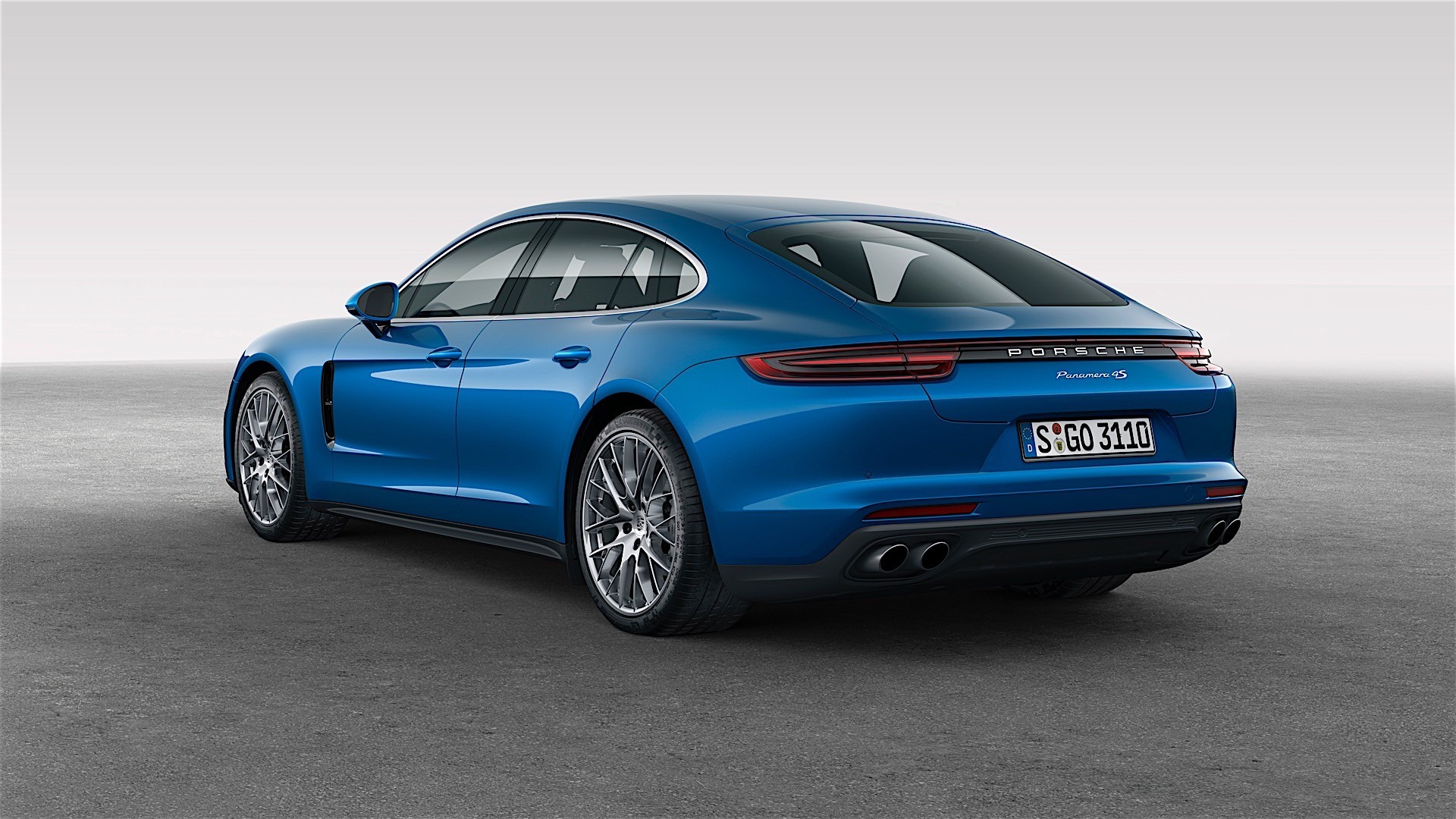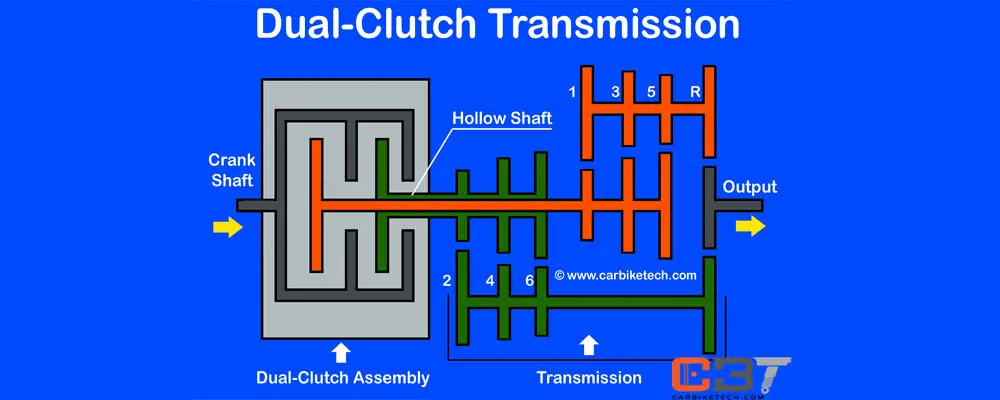Dual Clutch Automatic Transmission Cars
The dual clutch transmission (DCT), also referred to as a double- or twin-clutch transmission, combines the best of both manual and automatic transmissions into a hybrid that requires no input from the driver to shift gears, provides smooth and fast shifting, and operates more efficiently than either a manual or an automatic transmission. Its unique configuration is known as a semi-automatic transmission. It uses two separate clutches, one which engages even numbered gears in the transmission while the other engages the odd numbered gears. While one gear, third gear for example, is engaged, the clutch has the next gear, possibly fourth gear if the driver is speeding up, ready to go so it can instantly switch from third to fourth without losing any of the engine's power and without requiring the driver to press down the clutch pedal as he would need to in a manual transmission car.

Since the car's driver isn't required to press a clutch pedal to shift gears, it would seem the dual clutch transmission is automatic. Yet it is actually semi-automatic. Electro-hydraulic fluid is used to engage and disengage the clutches. This fluid forces the clutch disk against the flywheel of the engine and the power spins the car's wheels. When the car slows, sensors send less fluid to the clutch and it disengages because the fluid's force is not strong enough to hold it against the flywheel.

Two clutches make the dual clutch transmission possible. While one gear is engaged, the clutch prepares to switch to the gear on the opposite clutch. Since one clutch holds the odd numbered gears and the other the even numbers, the clutches constantly switch back and forth and the transition from one to another happens so quickly the driver never feels the car change gears.
The recently redesigned Mercedes-AMG CLA 45, the performance sub-brand's four-door compact sports coupe, is one of the latest cars to feature a dual-clutch automatic transmission. As you would guess from its Mercedes-AMG designation, the CLA 45 is performance-oriented in the extreme. While some dual clutch transmissions are better than others, you may experience a slight lag when going from a static position to a moving position. Once you get moving though, the instantaneous shifting of a DCT takes over. The dual clutch transmission takes the best features of an automatic and manual and places them into one vehicle. A dual-clutch gearbox, by contrast, uses two clutches, but has no clutch pedal. Sophisticated electronics and hydraulics control the clutches, just as they do in a standard automatic transmission. In a DCT, however, the clutches operate independently.

Advantages of the dual clutch transmission include more efficient performance and faster shifting speeds. Since the next gear is already ready to switch into, the change occurs almost instantly and the shift is smooth. No engine power is lost, as it is in automatic transmissions using torque converters to engage and disengage the engine. The torque converter is similar in principle to the electro-hydraulic fluid, but loses some of the power from the engine when engaging and disengaging.

Dual Clutch Automatic Transmission
Disadvantages of the dual clutch transmission include its high cost and the complexity of its parts. Cars utilizing this type of transmission cost more and repairs take more effort due to the extra parts and how they are aligned with one another. With more parts, there are more problems that can arise.
Dual Clutch Automatic Cars
A dual-clutch transmission is an automated manual transmission with two sets of gears, each operated by a separate clutch. 2020 Porsche 911 Specs & Reviews Find a 2020 Porsche 911 Near You One.

